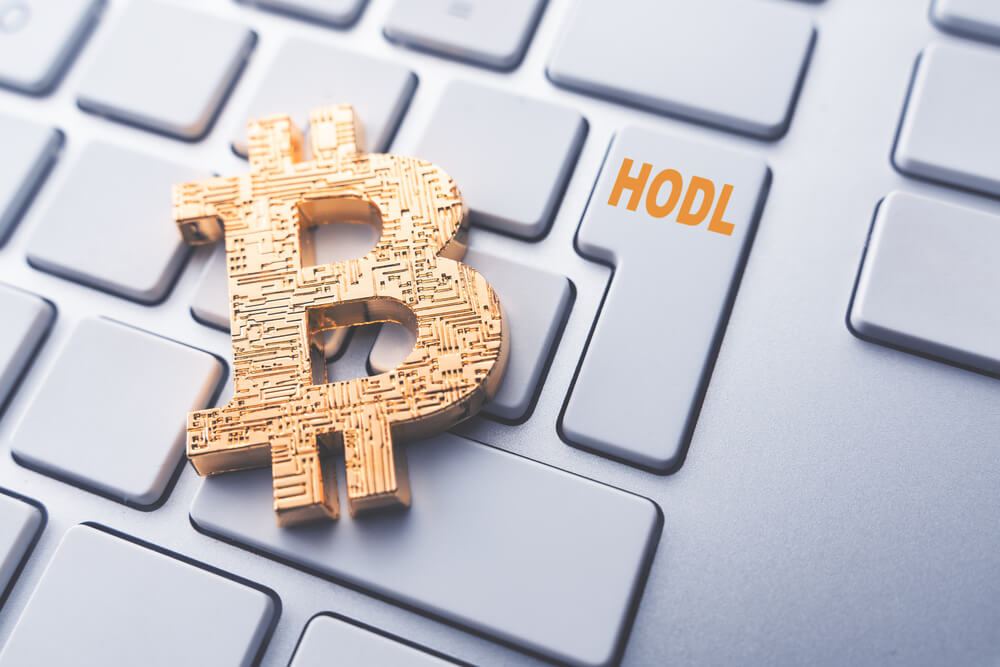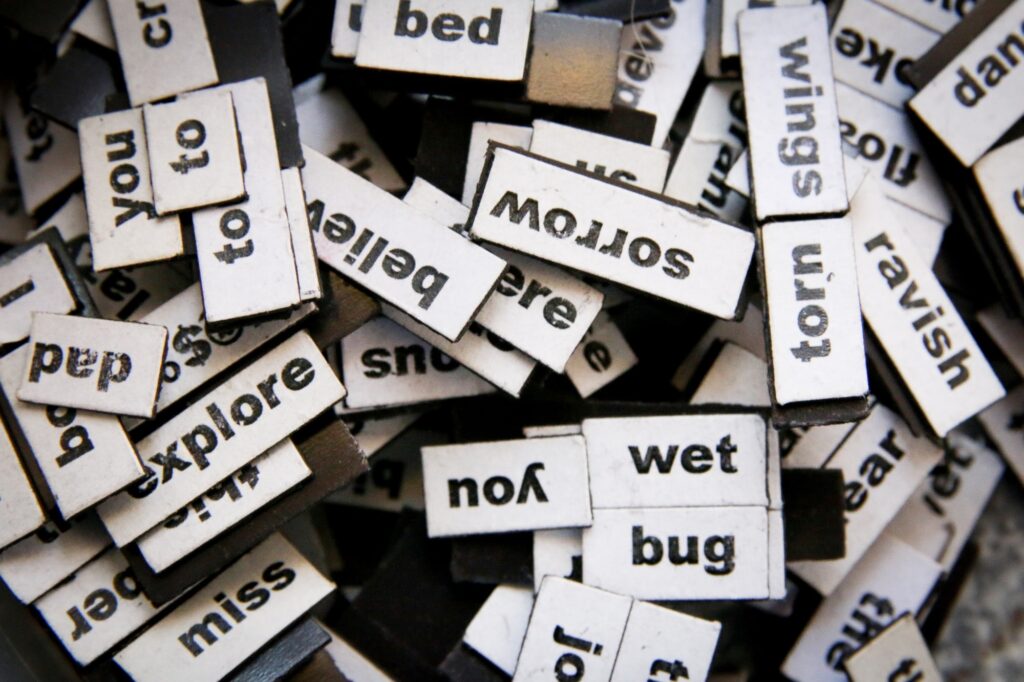This article explains NFT common terms that will help you navigate the non-fungible token space.
Are you confused about all the common NFT terms those in the space use? You’re not alone. There is a dizzying array of words and phrases to decipher.
If you want to learn more about the future of NFTs, you’ll see these terms a lot in blog posts, Discord channels, and Twitter.
As usual there is a video accompanying this article that you can watch below, and don’t forget to subscribe to my YouTube Channel to keep updated on new content.
Table of Contents
1. NFT
NFT stands for a non-fungible token, and it was the Collins dictionary word of the year for 2021. A non-fungible token is something unique and indivisible, for example, the CryptoPunks NFTs.
It differs from traditional fungible tokens like Bitcoin, which are divisible and interchangeable. Conventional currencies like the US dollar and the Euro are also examples of fungible goods because one $50 bill is identical to the next.
2. GM
GM stands for “Good morning,” and it’s how NFT influencers acknowledge others.
If you spend any time on Twitter browsing the NFT topic, you’ll quickly discover lots of NFT influencers saying “GM” to each other.
Things became more bizarre later when a project announced plans to airdrop free tokens to Twitter users based on how many times they use this phrase! Whether these tokens will be worth anything is open to debate.
3. GN
GN stands for “Good night.”
If you go on NFT Twitter later at night, NFT fans often use this phrase.
4. Ser
Many NFT traders and investors greet each other using this term which stands for Sir or ma’am. It way of being polite. Some NFT projects have their version of Ser. For example, SupDucks hodlers say “Sup” on Twitter and Discord.
5. WAGMI
The WAGMI acronym stands for “We’re all going to make it.”
It’s what NFT investors and traders say when feeling particularly bullish or optimistic about a purchase, project, or NFT artwork.
They believe a project will moon or reach a higher price, and they’ll get rich.
6. NGMI
The NGMI abbreviation stands for “not going to make it.”
This acronym is used when NFT investors and influencers feel pessimistic about a project or despair about a recent investment.
They use it if they believe an original investment is at risk or a project will fail.
NFT investors and traders also use this term after making a silly decision like selling a project before it reached full potential.
7. HODL

The HODL term is borrowed from cryptocurrency investors. It simply stands for “Hold on for dear life,” i.e., don’t sell or day trade, ever.
The term’s origins lie in a notorious 2013 Reddit thread. A drunk Bitcoin investor by the name of GameKyuubi posted a typo-ridden thread on Reddit explaining he was “hodling on for dear life” as “I’m a bad trader.” This typo and investment strategy stuck.
8. Diamond Hands 💎
Diamond hands 💎 describes having unbreakable hands that will never let go of a project. As with HODL, people say this to explain that they’ll never sell, even if the price drops or reaches an all-time high. Don’t believe them!
9. Paper Hands 🧻🤲
Conversely, paper hands 🧻🤲 describes buying a cryptocurrency or an NFT and then selling because of a news story or price fluctuation.
10. Burn
Burn is a technical term describing destroying a token. Although you can’t physically destroy an NFT token, holders and project owners send it to a permanently inaccessible address on the blockchain. The goal is to reduce available supply and increase the price.
For example, holders of the Anonymice NFT project can burn their purchase and roll a new one… that could be worth more or less.
11. Whales
Whales describe wealthy people in the cryptocurrency or NFT space. These are typically early investors or institutions that purchased a large amount of cryptocurrency or NFT tokens.
Their wallets and four portfolios are worth tens if not hundreds of millions of dollars. They own so much of a token or an NFT project that they can move the price of a project at will.
Smaller NFT investors tend to watch the wallets of Whales using blockchain NFT analytics tools like Nansen.ai and NFT websites like Dune Analytics so they can figure out what direction the market is moving in.
12. Ape in
The term ‘ape in’ describes spending all of your free capital on a single or series of projects at once. It’s the opposite of exercising due diligence.
NFT investors and traders often say to each other, “I aped in” after buying several. They also say “Don’t ape in” if they think a project NGMI.
Its origins lie in projects like Bored Ape Yacht Club and Cyberkongz. Those projects are visually represented by gorillas, monkeys, and apes.
13. DYOR
The DYOR abbreviation stands for “Do your own research,” i.e., “Don’t listen to me and then ape in just because I did. Otherwise, you’re NGMI.”
14. Rug pull
A rug pull describes when a project owner takes the Eth or money of early investors and runs.
The cryptocurrency and NFT spaces are perilous. New products are released every day, and would-be NFT investors can mint or buy into new projects at an extreme discount.
The rewards are immense. For example, you could have minted the CryptoPunks NFTs back in 2018 for almost nothing. Today, these NFTs trade hands for millions of dollars in Eth.
However, many nefarious actors promote projects on Twitter and encourage people to spend their Eth. Then, they stop posting updates, abandon the roadmap and let the project die. In other words, they pull the rug out from under the feet of investors.
15. Avatar Project or PFP
An avatar project or picture-for-profile project describes NFTs you can use for profiles on social media channels like Twitter and in groups on Discord.
Avatar and digital profile projects are evident because NFT influencers and creators use unique avatars as digital pseudonyms.
16. Mint
Mint describes buying a new NFT project when launched. Typically, a mint is free (or costs a small amount of Ethereum) plus the cost of gas. Dozens of mints take place every day, leading to gas wars.
17. Gas wars
A gas war describes when multiple people try to mint or buy into a project at once and compete against each other to gain access first.
The person who pays the most gas or Gwei to an Ethereum blockchain miner wins and gets the NFT first. Unfortunately, gas or Gwei is relatively expensive, and it can ease into an NFT investor’s budget.
18. FUD
FUD stands for “fear, uncertainty, and doubt” about digital artwork, assets, and projects. It describes spreading rumours and negative news stories about a project or an NFT, sometimes aiming to drive the price down.
19. Hopium
Conversely, hopium describes spreading positive news stories and optimistic speculation about digital assets. A hopium spreader wants more people to buy in or drive the price up using unfounded reports.
20. Bullish
Bullish describes hopeful sentiments about the chances of a project succeeding and reaching a new all-time high.
21. Bearish
Conversely, bearish describes pessimistic sentiments about the prospects of a project and its potential price.
22. Moon
Moon is a term borrowed from the cryptocurrency space.
NFT investors and traders say things like, “Wen moon?” They’re asking when a project will rise from its current floor price to a new all-time high so that they can cash out and buy a Lambo.
23. Generative Art
Genitive art describes using code to create unique pieces of digital art or NFTs. Examples of generative art NFT projects include Chromie Squiggles and The Eternal Pump.
The concept of generative art has been around since the early 1960s but came to prominence with NFTs.
24. Metadata
Metadata describes the underlying traits of an NFT as determined by the underlying smart contract. It’s the unique traits an NFT possesses, as underpinned by code.
Navigate to Opensea, and you can use the left-hand sidebar to see the metadata of your favourite projects
25. OS
OS is shorthand for the popular NFT marketplace OpenSea.
26. MM
MM is shorthand the software wallet MetaMask. It’s the wallet you’ll use to buy and sell NFTs on OpenSea, Nifty Gateway, and Rarible.
27. Reveal
Reveal describes when an NFT project is revealed or displayed to investors and early minters.
Project owners launch using ambiguous images teasing what the final NFT will look like. For example, the Galaxy Eggs project was launched using the image of an egg during the Summer of 2021. These eggs opened when the project was revealed, and investors received their NFT.
28. Snapshots
A snapshot describes when a project captures a record of all of the hodlers at a specific point in time.
Typically, this occurs when leads want to give holders a free NFT or another project.
29. Floor
Floor describes the minimum price for which an NFT is bought and sold.
NFT at the floor price have the most liquidity and is easiest to buy and sell. It is also what some investors use to gauge the value of the project.
30. Sweeping The Floor
When whales decide to buy all of the NFTs at or near floor price, they’re sweeping the floor. Cue hopium.
31. LFG
This is an acronym for “Let’s f*cking go.” It’s usually followed by memes of The Rock flexing or fast sports cars.
32. DAO
A DAO is a decentralised autonomous organization. Investors can join, send money to each other and run the organization from anywhere, anonymously.
33. Hardware and Software Wallet
A software wallet is a digital wallet for securing cryptocurrency and NFTs. The more popular software wallet is MetaMask.
A hardware wallet adds an additional layer of security as you have to physically use one to interact with NFTs. Ledger and Trezor manufacture the most popular hardware wallets.
34. Seed phrase
A seed phrase is a 12 or 24-word phrase used to access and secure software or hardware wallets. It’s unique and almost impossible to crack. So never reveal it to anyone or store it in a place that can be hacked.
35. Meta
No, Meta isn’t only the name for Mark Zuckerberg’s attempt to rebrand Facebook. The metaverse is a still theoretical concept about the future of the internet, whereby we’ll interact, play and work with each other in 3D environments, using things like NFTs.
36. Collectible
A collectible is anything that a fan or enthusiast likes to acquire and accumulate. Examples include stamps, rare coins, Beanie Babies, and now some NFT artworks.

